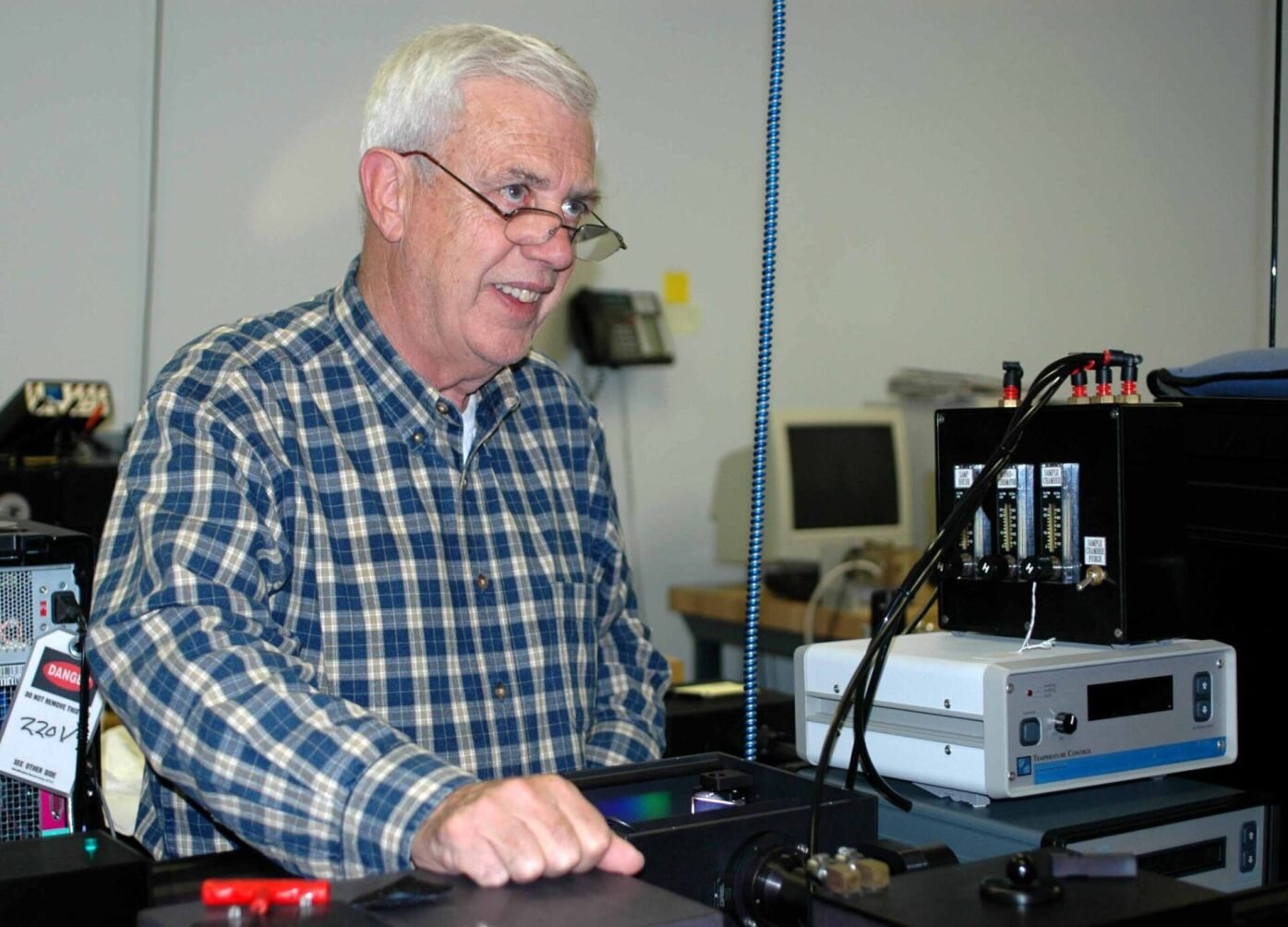10 Simple Techniques For Spectrophotometers
10 Simple Techniques For Spectrophotometers
Blog Article
The 9-Minute Rule for Circularly Polarized Luminescence
Table of ContentsEverything about Circularly Polarized LuminescenceAn Unbiased View of SpectrophotometersUv/vis Fundamentals ExplainedCircular Dichroism Things To Know Before You Get ThisSome Ideas on Uv/vis You Should Know

Although spectrophotometry is most commonly used to ultraviolet, visible, and infrared radiation, contemporary spectrophotometers can interrogate wide swaths of the electro-magnetic spectrum, including x-ray, ultraviolet, noticeable, infrared, and/or microwave wavelengths. Spectrophotometry is a tool that depends upon the quantitative analysis of particles depending upon just how much light is soaked up by colored compounds.
Circular Dichroism for Dummies
A spectrophotometer is commonly used for the measurement of transmittance or reflectance of solutions, transparent or nontransparent solids, such as refined glass, or gases. Numerous biochemicals are colored, as in, they absorb noticeable light and therefore can be determined by colorimetric treatments, even colorless biochemicals can frequently be transformed to colored compounds ideal for chromogenic color-forming reactions to yield compounds suitable for colorimetric analysis.: 65 Nevertheless, they can also be designed to measure the diffusivity on any of the noted light varieties that typically cover around 2002500 nm using different controls and calibrations.
An example of an experiment in which spectrophotometry is used is the decision of the balance constant of a solution. A certain chemical reaction within an option might happen in a forward and reverse instructions, where reactants form items and items break down into reactants. Eventually, this chain reaction will reach a point of balance called an equilibrium point.
What Does Circularly Polarized Luminescence Mean?
The amount of light that passes through the option is a sign of the concentration of certain chemicals that do not permit light to pass through. The absorption of light is due to the interaction of light with the electronic and vibrational modes of molecules. Each type of particle has an individual set of energy levels related to the makeup of its chemical bonds and nuclei and therefore will take in light of specific wavelengths, or energies, resulting in unique spectral residential or commercial properties.
They are extensively utilized in numerous markets consisting of semiconductors, laser and optical manufacturing, printing and forensic assessment, as well as in labs for the study of chemical substances. Spectrophotometry is frequently used in measurements of enzyme activities, decisions of protein concentrations, determinations of enzymatic kinetic constants, and measurements of ligand binding reactions.: 65 Eventually, a spectrophotometer is able to figure out, depending on the control or calibration, what substances are present in a target and exactly how much through computations of observed wavelengths.
This would come as a solution to the previously created spectrophotometers which were unable to take in the ultraviolet properly.
Indicators on Spectrophotometers You Should Know
It would be discovered that this did not provide satisfactory results, for that reason in Design B, there was a shift from a glass to a quartz prism which allowed for better absorbance outcomes site - circular dichroism (https://www.magcloud.com/user/olisclarity1). From there, Model C was born with a change to the wavelength resolution which ended up having 3 systems of it produced
It irradiates the sample with polychromatic light which the sample absorbs depending on its properties. It is transferred back by grating the photodiode range which detects the wavelength area of the spectrum. Because then, the creation and application of spectrophotometry gadgets has actually increased tremendously and has become one of the most ingenious instruments of our time.

Some Known Factual Statements About Circular Dichroism
Historically, spectrophotometers utilize a monochromator containing a diffraction grating to produce the analytical spectrum. The grating can either be movable or fixed. If a single detector, such as a photomultiplier tube or photodiode is utilized, the grating can be scanned step-by-step (scanning spectrophotometer) so that the detector can measure the light strength at each wavelength (which will correspond to each "step").
In such systems, the grating is fixed and the intensity of each wavelength of light is determined by a various detector in the variety. When making transmission measurements, the spectrophotometer quantitatively compares the portion of light that passes through a referral service and a test service, then digitally compares the strengths of the 2 signals and computes the percentage of transmission of the sample compared to the reference requirement.

Report this page